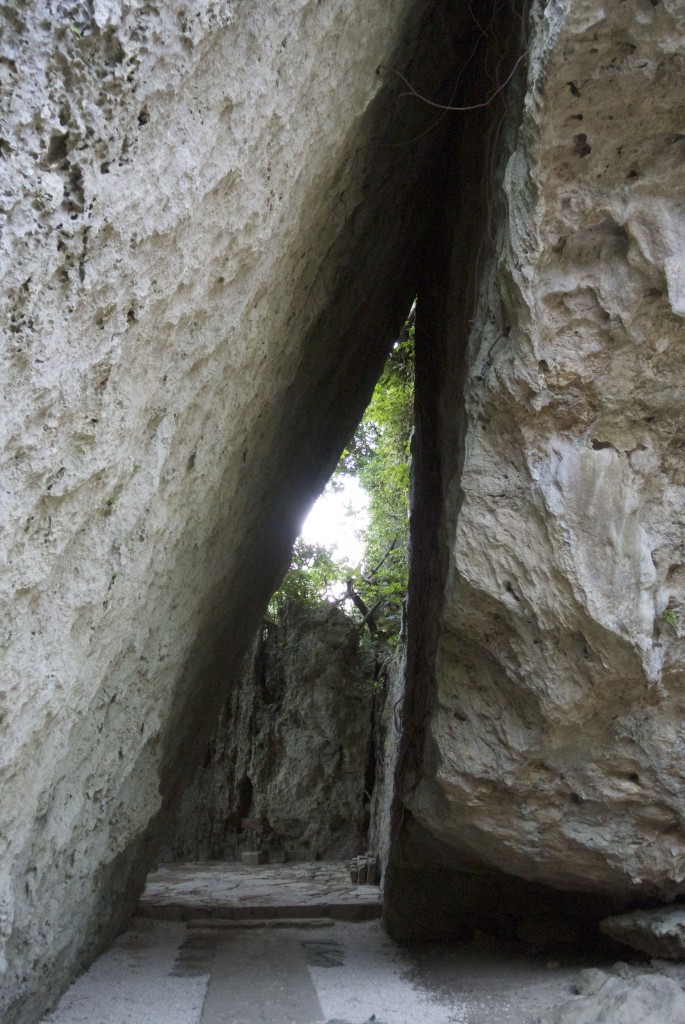
Opening into a sacred world
Seifa Utaki is the Ise of Okinawa. It’s a sacred site associated with royal patronage that lay at the apex of the Ryukyu kingdom’s religious structure. I think of all the spiritual places I’ve visited in Japan, this is the one that speaks to me most clearly of ‘a natural religion’. It’s as if nature herself had carved a cathedral out of sacred rock and subtropical forest.
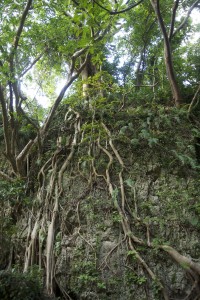
Nature itself adds decoration to the site’s surrounds
The site lies south-east from Naha, on the Chinen peninsula which is associated in mythology with the very origins of the country. Legend tells of how the first of the islands to be created was that of Kudaka, which lies offshore from Seifa Utaki. From there the gods proceeded to the main island itself. No doubt there is some folk memory here of the arrival of ancestors from the southern seas, who settled first on the outlying island. In such a way origins are made sacred.
In the past only priestesses could enter Seifa Utaki (the king and any workmen who entered had to tie their kimonos in female fashion). At the head stood Kikoe-Okimi, a virgin relative of the king dedicated to the gods. The system of Kikoe-Okimi was in effect from 1470-1869, during which time there was a total of fifteen in all. They were responsible for divination and the great rites of the realm which ensured its stability and prosperity. Like the Saio at Ise, the office is probably a legacy from the shamaness-queen who ruled the country in ancient times.
The Kikoe-Okimi lived not far from the royal palace, travelling along the coast to Seifa Utaki for important rituals. Beneath her was a hierarchy of priestesses, starting with the noro who had control of up to five villages. Other ranks included the yuta and kamichuu, responsible for such duties as divination.
Near the entrance of Seifa Utaki is a spring, where priestesses would purify themselves before entering the sacred precincts. The altars and different areas are named after rooms in the king’s palace at Shuri-jo, showing the close links with royalty. The most holy part of the complex is a triangular opening. leading to s small altar space from which there are views of Kudaka Island. It is as if an orifice opens up into a rock womb, offering a secret view of life’s origins. Here in this innermost recess, the priestesses fostered the renewal and rebirth of the nation.
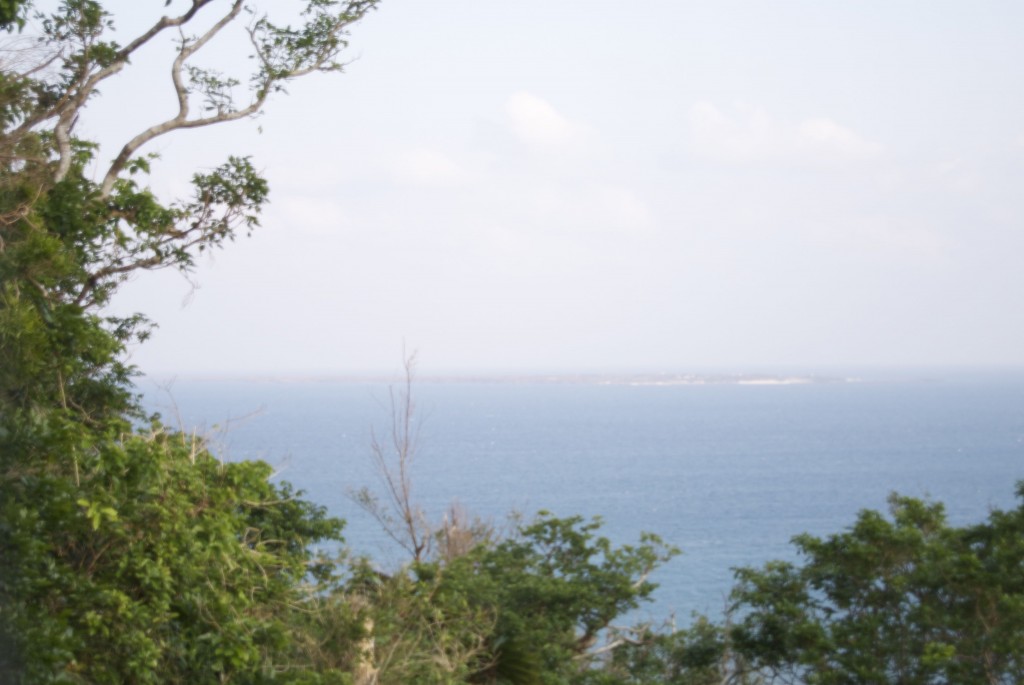
View towards distant Kudaka island, like a mirage on the horizon, mythic origin of Okinawa where the ancestors of ancient times first arrived
Unearthed items here include gold, celadon porcelain, coins and magatama jewellery, indicative of the precious offerings made. Outside the triangular opening are two large stalactites, from which water drips almost imperceptibly into bowls placed below. This liquid essence, wrung as it were from out of the very fabric of the rock, was considered holy water with magical qualities and used both for divination and in rituals to enhance spiritual power.
In Ryukyu times the site was a place of pilgrimage for king and commoner alike. Still today worshippers come here to pray, and it is here too that the leaders of extended families pay respects on behalf of their kin. Before the war the practice took place once a year, I was told, but now some only perform the ritual once every twelve years on completion of the cycle of the Chinese zodiac.
I was somewhat dismayed to find the atmosphere changed since when I last visited Seifa Utaki, with a welcome centre and guides in attendance. Since it became a World Heritage Site in 2000, visitors have increased dramatically. Now people walk around talking loudly on mobile phones, and parents yell out to errant children.
‘Seifa Utaki is a special sacred prayer site, not a tourist spot,’ said mayor Keishun Koya recently. He has a good point. One of the measures to protect its sanctity is to close it for six days a year according to the lunar calendar by which Ryukyu rites are fixed. It will allow worshippers to pray in peace amidst the immemorial rocks.
What makes Seifa Utaki special is the sensitive interaction of natural features and spiritual expression. Mystery, awe and wonder – these are precious feelings we’ve lost in the comforts of modern life. They can still be found at Seifa Utaki however, if you take care to visit first thing in the morning or linger to the last in the evening dusk. It’s at such times one can appreciate just why this was the Ryukyu’s ‘supreme sacred site’. It’s special indeed.
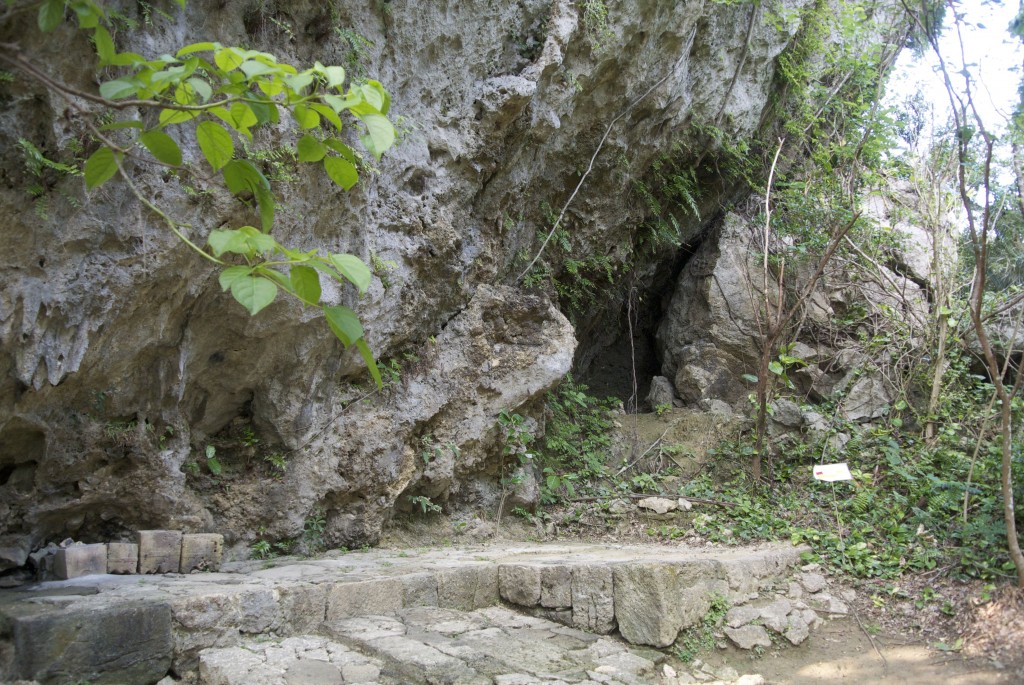
Ufuguni, one of the altars which served for the preparation of food
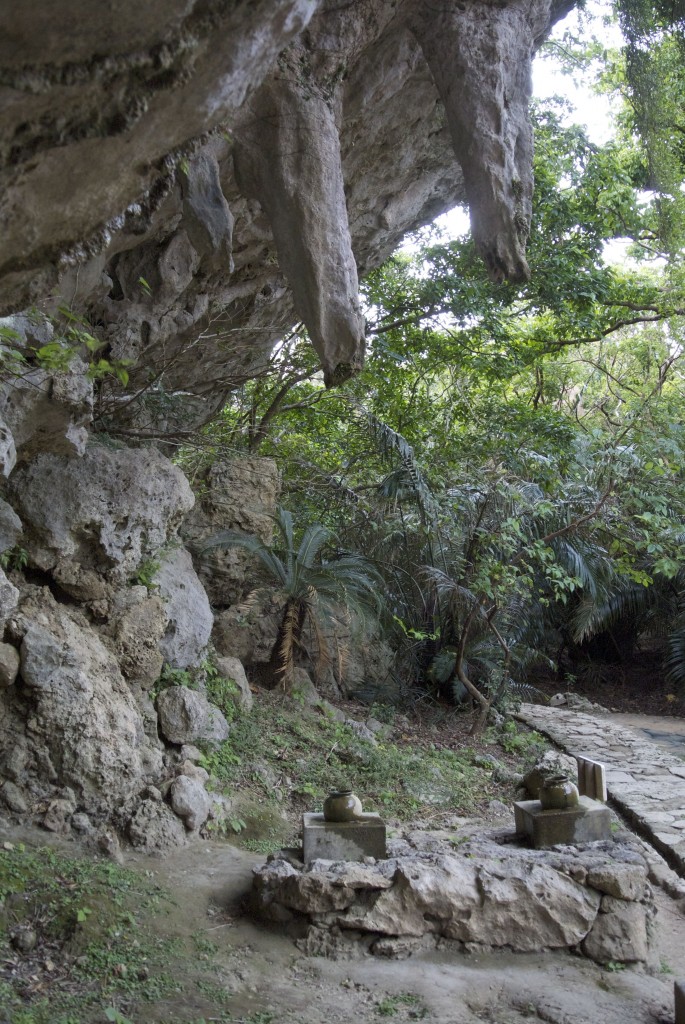
Two stalactites that drip holy water into bowls placed below
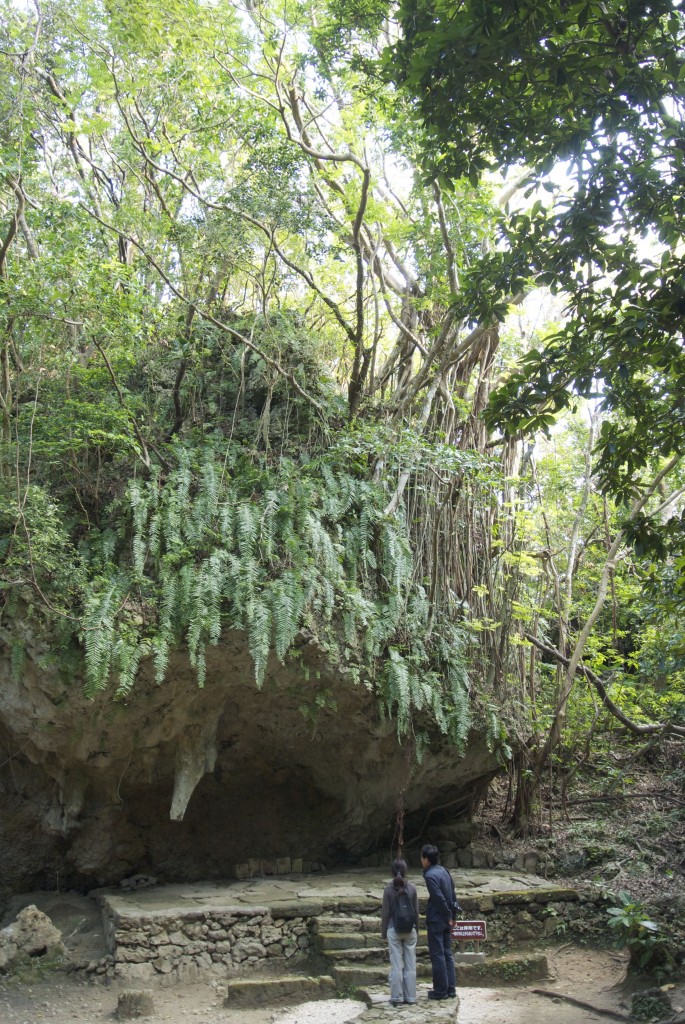
The awesomeness of nature is ever present

Leave a Reply